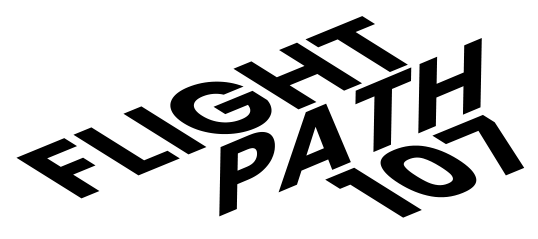Recreational vs Commercial Flight
What Defines Recreational and Commercial Part 107 Flight?
Commercial Drone Part 107 Flight:
As a general rule, Part 107 applies to the operation of small unmanned aircraft systems (sUAS) for commercial purposes.
Part 107 regulations apply to all commercial drone operations, no matter the drone’s weight. Even if your drone weighs 0.32 pounds (145 grams), you must follow Part 107 rules.
Civil Operations
Part 107 drone flights are considered civil operations under FAA regulations. These flights fall into the category of civil aviation because they are not classified as public (governmental) or military operations.
When Drone Flights Don’t Require Part 107 Certification
Under FAA regulations, a Part 107 certification is not required for drone operations in the following two scenarios:
1. Scientific Research:
When drones are used for non-commercial scientific research under certain exemptions, such as educational or governmental purposes.
2. Recreational Use:
Recreational drone flights are not subject to Part 107 regulations.
When drones are flown purely for recreational purposes and enjoyment, following the rules of the Exception for Limited Recreational Operations of Unmanned Aircraft (often referred to as the Recreational Flyer Rules under 49 U.S.C. § 44809).One example of a recreational UA would be a model airplane.
Part 107 Record Keeping
Requirements for sUAS Regulations
Accurate and Up-to-Date Records:
The owner of any sUAS, whether for recreational or commercial use, must keep maintenance records.
Whether or not the flight operations fall under Part 107 regulations, it is essential to maintain accurate and up-to-date records of all inspections, repairs, modifications, and regular maintenance activities to ensure the safety and reliability of the aircraft.
Owner’s Responsibility: The owner is responsible for ensuring that the sUAS is maintained properly and keeping maintenance records.
RPIC’s Responsibility: The RPIC must ensure that the sUAS is in good working condition before each flight, and this may involve reviewing the maintenance records and performing pre-flight inspections.
Falsifying Records – This is a “no-no”:
You can’t…
- Create fake records or reports to show you’re following the FAA rules.
- Make fake certificates, ratings, authorizations, records, or reports.
If you do, you could…
- Be denied a remote pilot certificate or a certificate of waiver
- Be denied a declaration of compliance
- Have any certificates, waivers, or declarations of compliance you have suspended or revoked
- Receive a civil penalty
- Get fined
When Your Certification Documentation is Requested
You are required to:
(1) Have your remote pilot certificate with a small UAS rating and identification in your physical possession (or electronically) and readily accessible when exercising the privileges of that remote pilot certificate.
(2) Present your remote pilot certificate with a small UAS rating and identification upon request, should any of the following parties request this of you:
- Federal Aviation Administrator
- An authorized representative of the National Transportation Safety Board
- Any Federal, State, or local law enforcement officer
- An authorized representative of the Transportation Security Administration
Part 107 Exam & Recurrent Training
You are required to:
Age Requirement: At least 16 years old
You must be at least 16 years old to receive a Part 107 Certification.
Retake Your Exam: 14 Days Second Attempt
If you don’t pass your Part 107 exam on the first try, don’t worry—there’s a clear path to retake it. You must wait 14 days before you can attempt the exam again.
This 14-day waiting period before you can retake the part 107 exam, which allows you time to review the material and prepare better for your next attempt. Make sure to use this time wisely to improve your knowledge and increase your chances of passing on your second try.
Part 107 Recurrent Training: Every 24 Months
Once you pass your Part 107 exam, you will not retake the entire test. Instead, you must complete a recurrent training course every 24 months to keep your Part 107 certification active. This training ensures that you stay updated on the latest regulations and safety procedures.
Timeliness
The FAA provides a 24-month window from the date of your initial knowledge test to complete the recurrent training, but you don’t need to take it on the exact day—just anytime within that two-year window to remain current.
Here’s what this means:
- If your certificate was issued on March 10, 2023, you have until March 10, 2025 to complete the recurrent training.
- However, if the 24-month period lapses, you would no longer be current, and there’s no grace period to fly legally under Part 107 until you complete the training.
For example, if your certificate was issued on January 15, 2025, it would need to be renewed by January 15, 2027, and therefore would need to complete your recurrent training by January 15, 2027 to stay compliant.
If You Missed Your Recurrent Training Deadline:
Fly according to the rules set for hobbyist operators, which include limitations on commercial use, until you have successfully completed the required recurrent training through the FAA’s online platform.
1. Temporary Hobbyist Status
If you missed completing your recurrent training by the deadline, you must temporarily operate under hobbyist rules. This means you must avoid any commercial drone activities and follow the regulations set for recreational use only.
2. Complete Required Training
You need to finish the necessary recurrent training through the FAA’s online platform to restore your Remote Pilot certificate privileges. This training will get you back into compliance and ready for commercial operations.
3. Understand Requirements
Remember, before the end of 24 calendar months after receiving your Part 107 certification, you must pass the recurrent aeronautical knowledge test. The end of your 24 month period is determined by the exam date, not by when your license was issued. Make sure you stay up-to-date with these requirements to maintain your certification.



